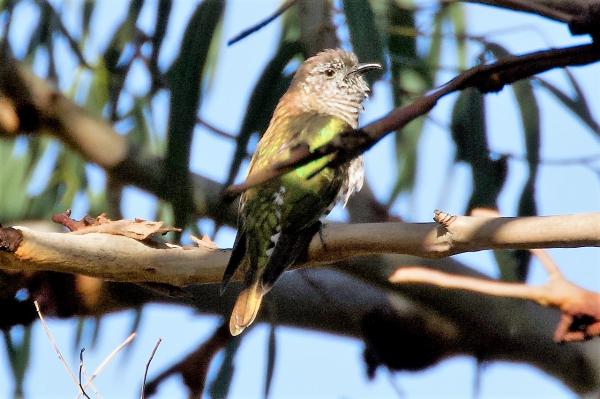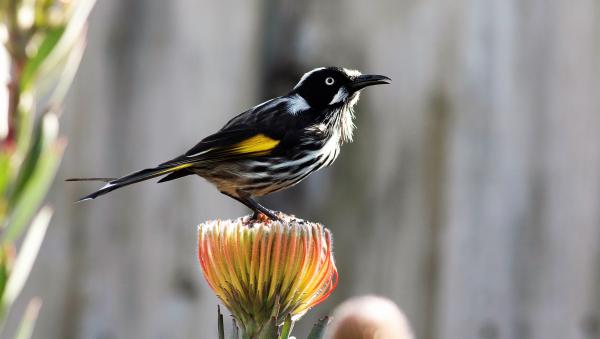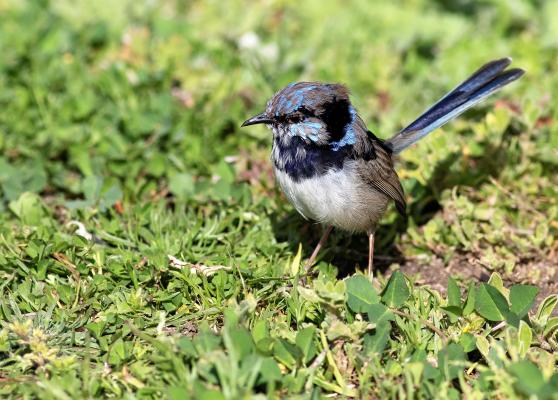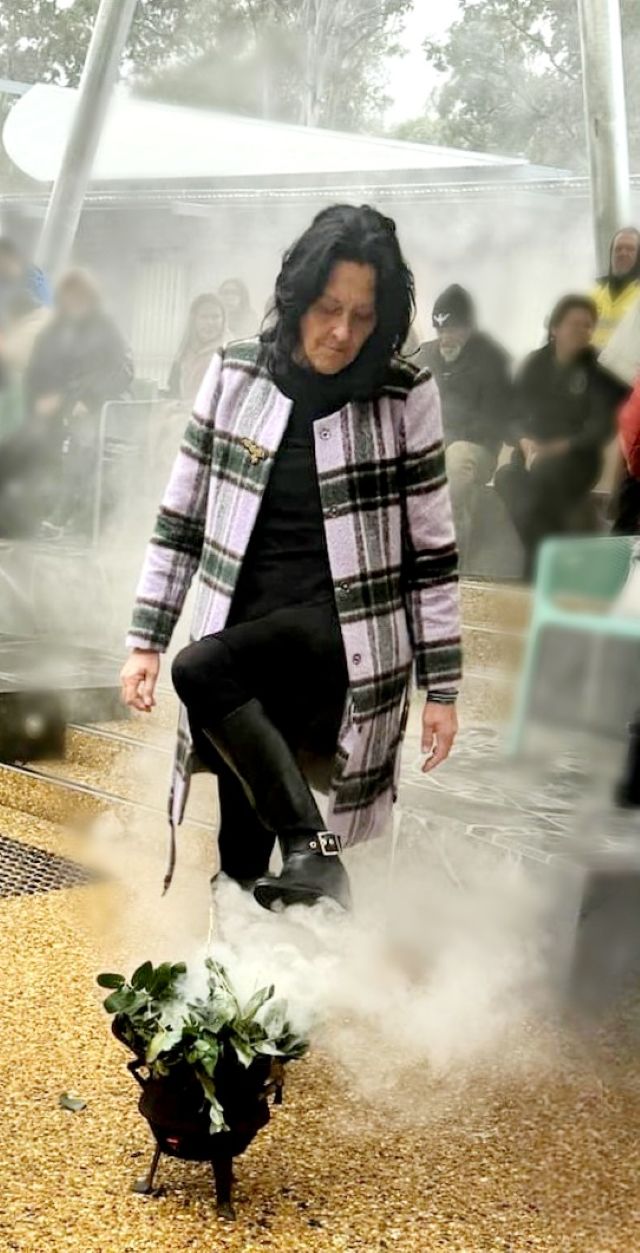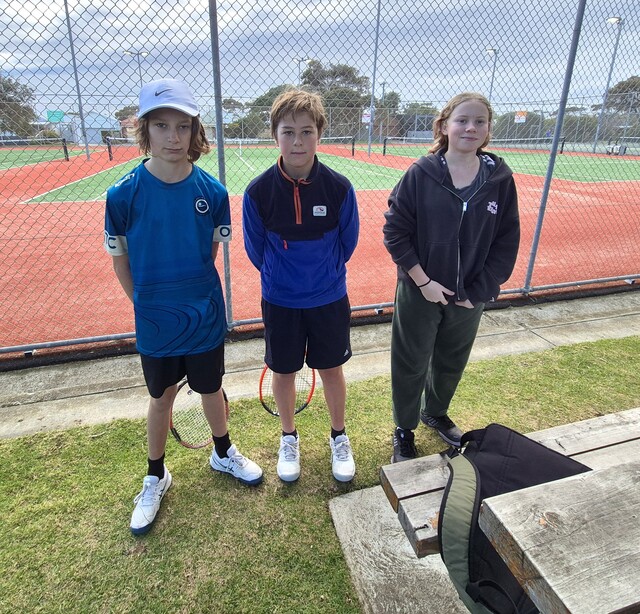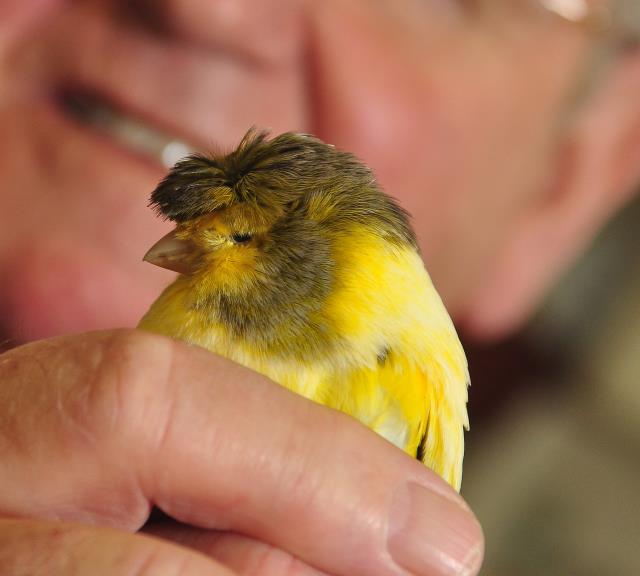Over the past few weeks, we have experienced some very wintery and windy weather, but the days are getting longer and milder.
The rain has been very welcome. I must take a drive to Lake Modewarre to see if the lake has filled up over the past few weeks (when we are allowed to venture a bit further from home).
I have been looking around the Bellarine on my way to work. I have been fortunate to spot two families of black-shouldered kites, one in Curlewis and the other at St Albans Park near Reedy Lake.
In both cases there were two fledglings, which was great to see.
I was happy to see a fledgling little wattlebird at ‘Sue’s Park’ around the corner from my house.
I also noticed a pair of newly fledged red wattlebirds in the same vicinity. I’ve been watching a pair of spiny-cheeked honeyeaters in the same park to see if they were showing any nesting activity, but so far they have just been chasing each other around a small area of the park.
I have seen New Holland honeyeaters taking spider webs from around the eaves of my house, presumably to use in nest construction to hold the twigs together.
I spotted a superb fairy-wren that was moulting into a breeding plumage near the boat ramp in Ocean Grove. This beautiful bird is obviously used to being around people, as it just danced around my feet and was not the least bit worried about my presence.
According to ‘Birdlife Australia’, two-year-old superb fairy-wren males moult into their breeding plumage in July, whereas one-year-old birds wait until September. Older males also moult directly from breeding plumage to breeding plumage, without going through the ‘brown’ non-breeding stage. Therefore, the bird I photographed near the boat ramp was probably a one-year old male.
There have been a few sightings of swift parrots around Ocean Grove recently, by Tom, Christine and Guy Dunstan (who saw a flock of over a dozen swift parrots in Yellow Gums Estate).
Swift parrots are a critically endangered bird, that fly to the mainland in winter and then back to Tasmania during the breeding season.
I received an email from Kevin, who was looking to photograph white-naped honeyeaters in Clows Lane, Point Lonsdale, and came across a Horsfield’s bronze cuckoo.
Cuckoos are active and vocal in spring as they lay their eggs in the nests of small birds such as fairy-wrens or thornbills.
Robin from Bellarine Birdlife Group saw and heard a fan-tailed cuckoo near Point Lonsdale, so spring must be in the air.
I also received an email from Stephen, who photographed a flock of magpie geese in a flooded paddock at Moolap. Magpie geese do seem to like the Moolap area, and can also be seen around Lara, but mainly they frequent Northern Australia. I think I owe Stephen an apology as he sent me a photo of a leucistic Australian magpie that he had spotted at Armstrong Creek, and I think I accidently sent in a photo of a leucistic duck to the Voice instead for the last issue.
Carole from Bellarine Birdlife has been fabulous in keeping all members in touch with bird sightings and other positive news during the stage 3 lockdowns.
Carole reported this week that Peter got a very good sighting of a magpie goose at Mcleod’s Waterhole in Drysdale, and Libby sighted an extremely large flock of very noisy yellow-tailed black cockatoos heading for Ocean Grove.

